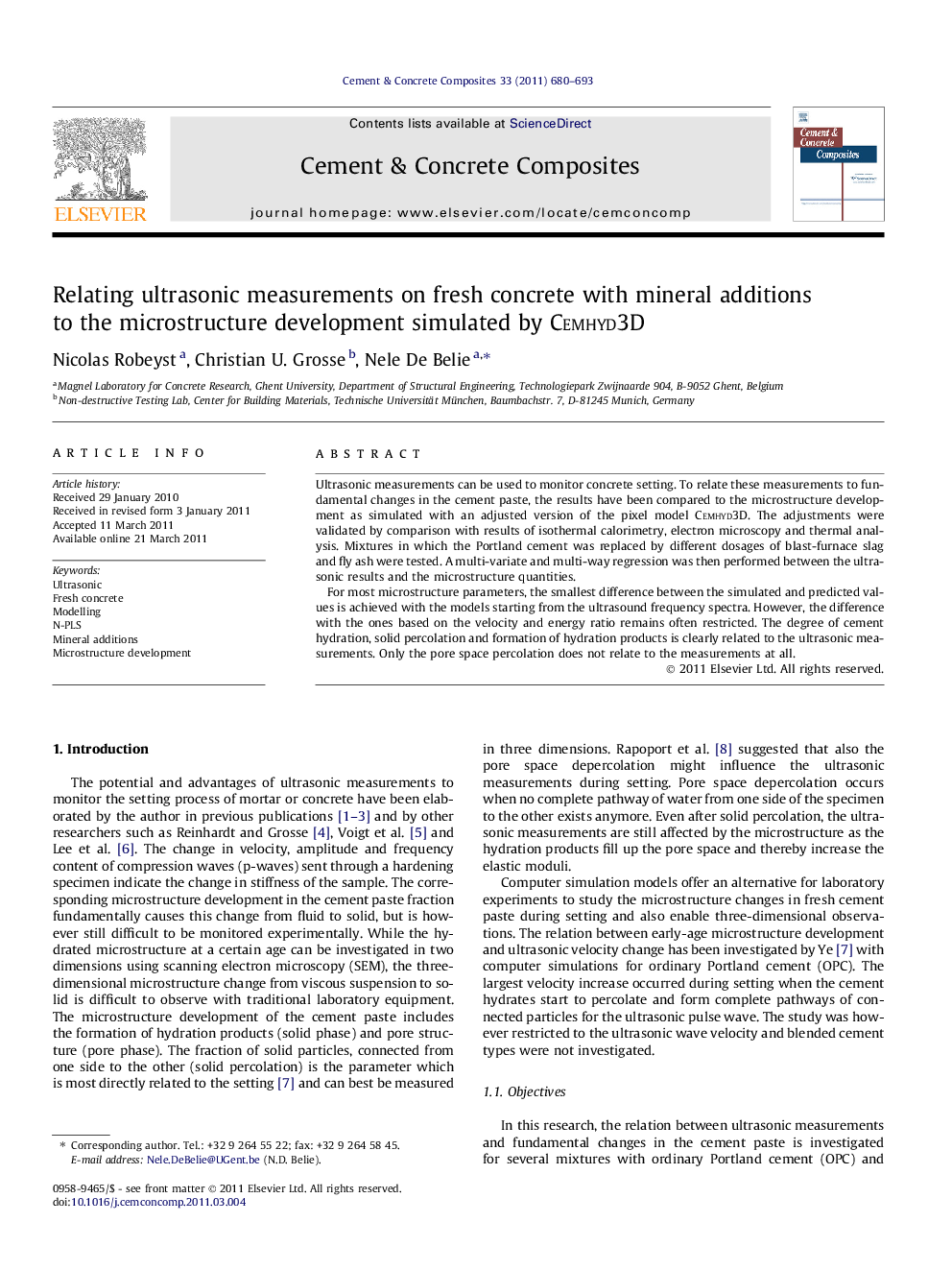| Article ID | Journal | Published Year | Pages | File Type |
|---|---|---|---|---|
| 1455135 | Cement and Concrete Composites | 2011 | 14 Pages |
Ultrasonic measurements can be used to monitor concrete setting. To relate these measurements to fundamental changes in the cement paste, the results have been compared to the microstructure development as simulated with an adjusted version of the pixel model Cemhyd3D. The adjustments were validated by comparison with results of isothermal calorimetry, electron microscopy and thermal analysis. Mixtures in which the Portland cement was replaced by different dosages of blast-furnace slag and fly ash were tested. A multi-variate and multi-way regression was then performed between the ultrasonic results and the microstructure quantities.For most microstructure parameters, the smallest difference between the simulated and predicted values is achieved with the models starting from the ultrasound frequency spectra. However, the difference with the ones based on the velocity and energy ratio remains often restricted. The degree of cement hydration, solid percolation and formation of hydration products is clearly related to the ultrasonic measurements. Only the pore space percolation does not relate to the measurements at all.
